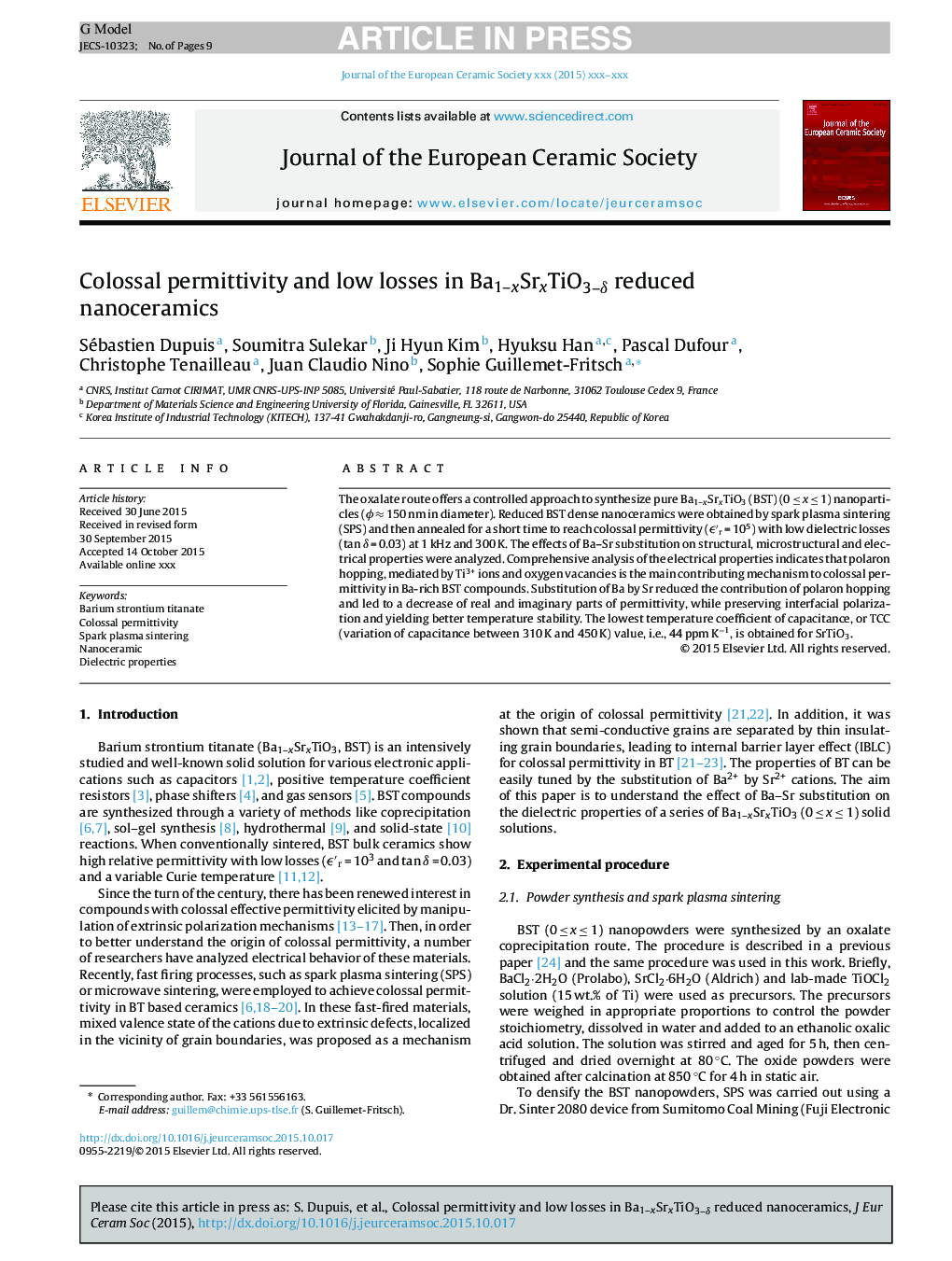| Article ID | Journal | Published Year | Pages | File Type |
|---|---|---|---|---|
| 10629410 | Journal of the European Ceramic Society | 2016 | 9 Pages |
Abstract
The oxalate route offers a controlled approach to synthesize pure Ba1-xSrxTiO3 (BST) (0 â¤Â x â¤Â 1) nanoparticles (Ï â 150 nm in diameter). Reduced BST dense nanoceramics were obtained by spark plasma sintering (SPS) and then annealed for a short time to reach colossal permittivity (ϵâ²r = 105) with low dielectric losses (tan δ = 0.03) at 1 kHz and 300 K. The effects of Ba-Sr substitution on structural, microstructural and electrical properties were analyzed. Comprehensive analysis of the electrical properties indicates that polaron hopping, mediated by Ti3+ ions and oxygen vacancies is the main contributing mechanism to colossal permittivity in Ba-rich BST compounds. Substitution of Ba by Sr reduced the contribution of polaron hopping and led to a decrease of real and imaginary parts of permittivity, while preserving interfacial polarization and yielding better temperature stability. The lowest temperature coefficient of capacitance, or TCC (variation of capacitance between 310 K and 450 K) value, i.e., 44 ppm Kâ1, is obtained for SrTiO3.
Keywords
Related Topics
Physical Sciences and Engineering
Materials Science
Ceramics and Composites
Authors
Sébastien Dupuis, Soumitra Sulekar, Ji Hyun Kim, Hyuksu Han, Pascal Dufour, Christophe Tenailleau, Juan Claudio Nino, Sophie Guillemet-Fritsch,
